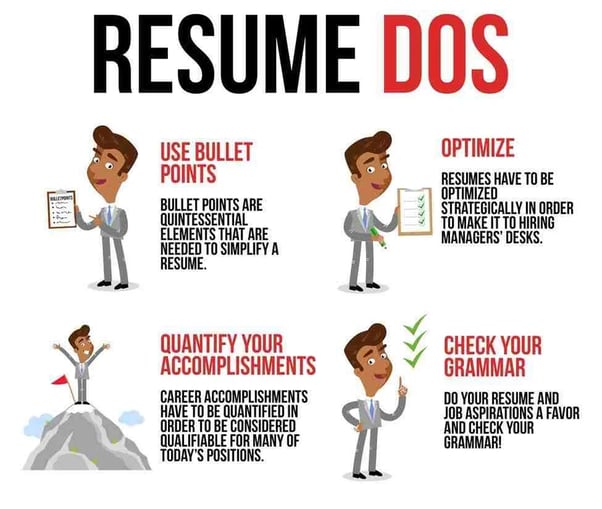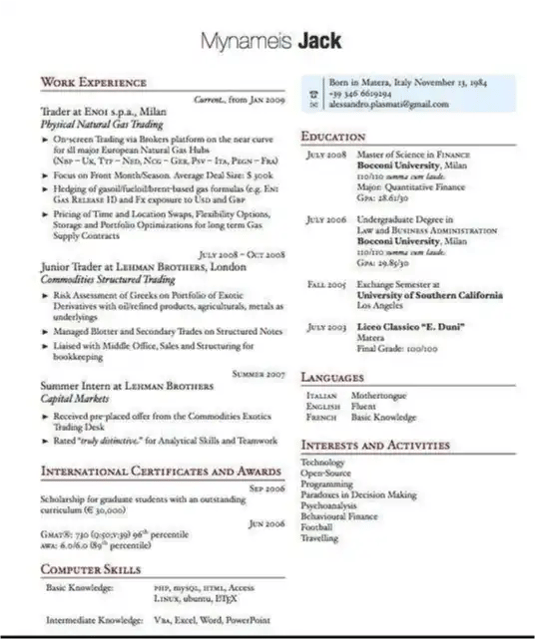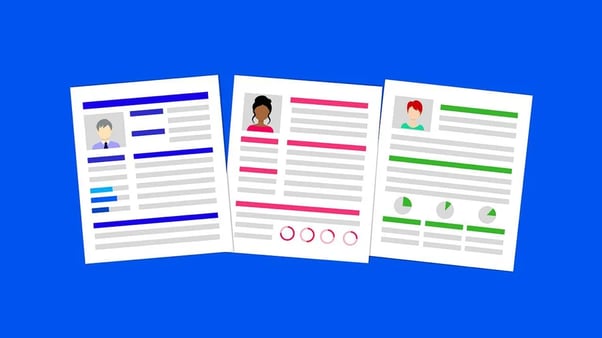Explaining gaps in your resume | OdinSchool
Summary
Table of Content
A good resume is not just a paper that shows your professional experience, achievements, promotions, and successful projects. It also shows your employment history - and the gaps between.
Although taking a break is not a wrong thing to do, it could reflect poorly on your career. The toughest part is to get past the initial screening and explain why there is a gap in your professional life.
If you are wondering how to explain gaps in employment, this blog will go in detail on how you can overcome your gaps in the resume.
The Story: How to Explain Gaps in Employment
Meet Mr. Michael Richard
A software engineer, who like most people, dreamt of traveling around the world to meet new people and learn about different cultures. But when he traveled, little did he know of the troubles waiting for him when he comes back a year later.
After coming back, Michael brushed up his skills and interviewed for the position, only to be rejected from all the five companies he applied for.
Utterly depressed, Michael came back home wondering what went wrong, especially when he thought that he was at his best.
After mulling over the reasons, Michael decided to add and omit a few portions in his resume, and to everyone's shock, he walked out of the next interview with an offer letter in his hand.
Here is what Michael did to overcome his gaps in employment.

|
You may also like: Top 10 Certifications You Can Get In 2020 |
The Do's

1. Experiences Gained During the Gap in Employment
When Michael walked into his first interview, all he had was a two-year-old, unformatted resume.
The resume had nothing wrong. In fact, it highlighted his strengths, lined up the accolades he had won, and clearly explained his skill as a software engineer.
But missing out a year from his resume made it look like he was unemployed or employable for a year.
So the first thing Michael did to overcome the gaps in employment was to update what he did during the gap — he added his travels and the projects he worked with as a freelancer.
2. Omit Irrelevant Jobs from the Resume
Never walk into an interview without editing your resume to fit yourself to the job profile you are applying for. This way, you are not just making yourself suitable for the company, but also explaining why not hiring you is a loss for the company.
If you had hopped a couple of companies working on different profiles, remove them from your resume. They are just dead-weights to your profile. Omitting the irrelevant jobs also showcases that you are stable in your roles.
While experimenting with various job profiles may sound interesting, recruiters identify that as indecisiveness. They will doubt that you will leave the job in a short time, and that is not something they are looking forward to.
3. Recommendations from Previous Supervisors
Still, the gaps in his resume were deafening enough for Michael’s strengths to go unnoticed. So, he came up with the idea of inserting recommendations.
He had served his previous companies diligently and had a good rapport with his employers. He also asked his freelance clients for a word about his work, which they happily provided.
One more aspect hiring managers look for in candidates are results, how their projects are performing in the industry, and what have the candidates accomplished in their tenure.
It is important that as someone with gaps in their resume, one should communicate their past work in detail. From reasons for success to the challenges encountered and the solutions executed.
4. Consider Using a Different Resume Format
A typical resume will highlight the number of years you have worked as a professional and what you have achieved during your tenure.
In your refined Resume format, you are going to say the exact same things, except with a highlight on your achievements and a bit less on the years. Although it doesn’t completely hide your gap, it makes it look less obvious and prevents the gaps from becoming a red flag.
5. Showcase Your Investment in Professional Development
Instead of trying to hide the gap in employment, cover the gap in the resume with your investment for professional development. If you have taken any courses, mention it in your resume.
Even if you haven’t, let your recruiter know what you learned during your time away from work, and how it will propel your career forward.
An Optimized Resume Will Look Like This

The Don’ts

1. Lying In an Interview
Michael - although just once - had gone wrong while explaining gaps in his employment to his interviewer.
He lied to get a job. He said that he tried his hand at freelancing for a year, and it was only for more stability that he is trying to join a company.
Recruiters can sense a lie when it was being created in mind, and they will make sure that you never know if they have found your lie.
By the way, Michael fell short of seven freelance projects when the recruiter asked to show his work. He had told them that he completed nine projects in a year.
2. Hiding the Actual Reason for Employment Gap
If you quit your job to pursue something else, tell them why you wanted to do that, and why you are back looking for a job.
If you were part of massive layoffs during a recession, tell your recruiters that your company was restructuring the organization, and you had to switch.
If you were fired, let them know that you and your company didn’t see eye to eye on a lot of matters and that you leaving the company was better for your career.
Though the reason might not be what the recruiter wanted to hear, it will let them know who you are. If you are not suitable for the company or if the company is not suitable for your preferences, it is better to look for other jobs now than to join and resign a month later.
But for the sake of being honest, don’t say, ‘I like to travel, but I don’t have any money, so I need a job.’ Put in a more appealing way, like saying, ‘I have spent considerable time for my passion. Now, I want to make a living continuing my professional career’.
3. Not Being Prepared
Being mentally prepared is one of the most effective ways on how to explain gaps in your employment.
You know where you lag behind. And you can be certain that the recruitment officer will raise questions from your weakness.
Before the interview, try anticipating the kind of questions the interviewer might raise. Rehearse your response accordingly. Being prepared eliminates the stammering and allows you to give logical answers.
4. Not Being Confident
Although you have gaps in employment, you shouldn’t allow your employer to doubt your skills. And not being confident with your answers is all that your recruiter needs to declare you ineligible.
So, sound authentic with your answers. Make sure to let them know what you are talking about and that you are at the top of your game.
5. Hiding the Months to Cover Gaps in Resume
You might get advice from friends to not mention the months of your professional experience in your resume. Suppose you haven’t been working since Jan 2019. Your resume will look like,
- ABC Inc. (2015 - 2017)
- XYZ Corp (2017 - 2019)
This is in no way covering the gaps in employment. It is, in fact, doing the opposite — bringing into further scrutiny the exact time frames of your employment.
Tips to Optimize Your Resume both for ATS and Recruiters

Applicant Tracking System (ATS) is employed by various multinational companies to take care of recruitment needs. ATS, just like any machine, understands your resume only when it is in a certain format.
If it is an ATS shortlisting your resume for interviews, forget the gaps in employment, all you need is to follow the three steps to get past the system. Once you are in the office talking to the recruiter, you can then explain your employment gap.
1. Keep Your Resume Format Simple
Since the first impression contributes a lot towards getting hired, a lot of people get creative in their resumes. They want to leverage their creativity and innovation to increase the odds of getting hired, which is a good thing to do. You can use the help of professional services such as Essay Tigers and others that will help you compile a simple optimized resume to make the right impression.
But ATS, unfortunately, prefers a simple resume layout. So you are better off without the shadows, logos, and unusual font styles — stick to Arial, Times New Roman, and Courier.
Furthermore, make sure to use relevant headings like Professional Experience, Education, and Achievements, instead of new names that the ATS doesn’t recognize.
2. Use the Right Keywords
ATS understands how relevant your resume is to the profile by analyzing the words published in your resume. Typically, you will be writing what you did in your previous companies. But if it's not what the ATS is looking for, your profile will not get shortlisted even though the job is the same.
So if you think the job description suits your profile, try using the keywords given in the job description to make your resume more relevant.
3. Remove the Career Objective
The reason we don’t recommend adding the Career Objective section is that it states the obvious. You are a hardworking person who is driven with a specific goal to reach — every candidate almost says the same.
Instead of wasting space explaining the obvious, you can use it to add more relevant keywords in terms of skills, experience, and achievements.
Wrapping Up
One of the important things about explaining gaps in a resume is that you don’t have to explain every detail of your reason.
For example, you can say, ‘I was traveling through Asian countries from December 2018 to December 2019, while working as a freelancer. And now that I am back, I want to resume my full-time career’.
Instead of explaining every detail of your career gap, keep your answers crisp and brief; you will automatically sound confident. Also, don’t forget to wear a smile to give a positive first impression.
We hope that this has helped you figure out how to explain gaps in your resume.





